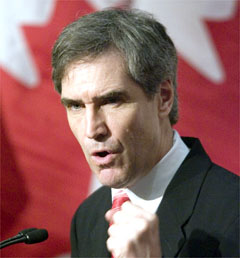
The upcoming federal Liberal leadership convention may be the most exciting such contest in a long time. Voting is likely to continue through two or three, and possibly more, ballots before a winner is chosen from the field of eight contenders. (Three long-shot hopefuls quit the race many weeks ago.)
To gain some insight into what may transpire in Montreal on Dec. 1, The Tyee examined 27 of the most recent major-party leadership tilts over the past four decades -- 18 at the federal level and nine in British Columbia. (This does not include leadership conventions won by acclamation, such as the NDP contests in 1970 and 1987 won by Dave Barrett and Mike Harcourt, respectively, or lesser-party contests.)
Two lessons seem clear. First, the candidate in the top position after the first round of voting is more likely to win than any other contender. Second, it is extremely unlikely, if not impossible, for a candidate who is not among the top three on the first ballot to win on a subsequent round of voting.
What that means for Ignatieff and his competitors in hot pursuit, we’ll get to in a minute. But first, the historical record:
Nine of the 27 most-recent federal and B.C. major-party leadership battles were decided on the first ballot, as the winner obtained 50 per cent or more of delegate-member support on the initial round of voting. Another eight were decided after two ballots, eight more needed four ballots, and two required five.
Of the 18 contests taking two or more ballots, 13 were won by the candidate who led on the first count. Three more went to the first-round runner-up (that is, the candidate in second-place on the first ballot).
On just two memorable occasions -- in 1976, when Joe Clark won the federal Progressive Conservative leadership, and in 1984, when Bob Skelly became leader of the B.C. New Democratic Party -- did a candidate who was neither first nor second in the first-round of balloting emerge victorious on the final count.
Both Clark and Skelly were in third place after the first ballot in their respective contests. Clark beat 10 other candidates to win on the fourth round of voting; Skelly prevailed over five others in a marathon contest that lasted five votes.
Just five first-round leaders failed to win election. In descending order of their first-round support, they were Svend Robinson, with 37.8 per cent (federal New Democratic Party in 1995); Joe Clark, 36.5 per cent, (federal Progressive Conservatives, 1983); Grace McCarthy, 35.7 per cent (B.C. Social Credit party, 1991); David Vickers, 25.5 per cent (B.C. NDP, 1984); and Claude Wagner, 22.5 per cent (federal Progressive Conservatives, 1976).
Iggy’s obstacle course
Michael Ignatieff is the acknowledged front-runner in the upcoming Liberal tilt, and as such is in an enviable position to secure his party’s leadership. However, more than a few observers question his ability to grow in subsequent rounds, as his views on foreign affairs (notably, Canada’s role in Afghanistan, relations with Israel, and the war in Iraq) may be anathema to a majority of convention delegates.
Bob Rae, Gerard Kennedy, and Stephane Dion loom close behind Ignatieff. Whichever one of these three is in second-place on the first ballot will be well positioned to mount a credible challenge to the leader in subsequent votes.
The third-spot challenger has a more difficult task, and can win only if both of the two front-runners falter. The candidate in fourth position after the first-ballot would appear to have almost no chance of being successful.
First round votes committed
The Liberal leadership contest now underway is unique in that nearly 85 per cent of the delegates eligible to vote at the convention (more than 4,500 of nearly 5,400) already are committed to their first-round choice. These delegates were chosen by fellow Liberals at local riding association and club meetings on "Super Weekend" (Sept. 29-Oct. 1) on the basis of their first-vote commitment. Once the first round of voting is completed at the convention, however, all delegates will be free in subsequent rounds to vote for any candidate still in the contest.
Four candidates emerged from "Super Weekend" with a combined total of more than 80 per cent of the committed delegates. Ignatieff led with 30.2 per cent, followed by Rae at 20.3 per cent, and Kennedy and Dion had 17.3 per cent and 16.0 per cent, respectively.
The other four candidates -- Ken Dryden, Scott Brison, Joe Volpe and Martha Hall Findlay -- had a combined total of less than 15 per cent of the delegates. Another three percent of delegates were elected as "undeclared," or uncommitted.
‘Ex officio delegates’
The remaining 15 per cent of convention voters (about 870) are "ex officio" delegates, eligible to participate by virtue of their party service, and allowed to vote for the candidate of their choice on every ballot.
This "ex officio" group includes Liberal senators and members of Parliament, party candidates in the last general election, riding association presidents, and other executive officials. Of the front-runners, Ignatieff is backed by 39 MPs and 10 Senators; Rae by eight MPs and 10 senators; Kennedy by 13 MPs and 6 senators; and Dion by 9 MPs and 5 senators.
Many prominent "ex officio" delegates from British Columbia have declared their support for one candidate or another. Ignatieff is endorsed by MPs Stephen Owen, Keith Martin, Sukh Dhaliwal and Blair Wilson, while Rae has the backing of MPs Ujjal Dosanjh and Hedy Fry, and Senator Mobina Jaffer. In Kennedy’s corner are MP Ray Chan and Senator Larry Campbell. Don Bell, MP for North Vancouver, has endorsed Dryden, but senators Jack Austin and Ross Fitzpatrick have not declared their support.
Crunch time
The number of voting delegates expected to attend the convention is about 5,200. The winning candidate will need to obtain votes from 50 per cent plus one of the delegates, or roughly 2,600 on the final ballot.
The first round of voting likely should see Ignatieff with the support of 30 to 35 per cent or so of elected and "ex officio" delegates (roughly 1,600 to 1800). Each of Rae, Kennedy and Dion hope to surpass the 20 per cent mark (slightly more than 1,000), but at least one of them will be well below that mark. The remaining four candidates combined are unlikely to garner more than 600 first-ballot votes.
In this scenario, Ignatieff, if he is to be successful, will need to obtain the support of an additional 800 to 1,000 delegates on the second and subsequent ballots. To stop him, whichever of the Rae-Kennedy-Dion troika is in second-place will need to pick up about 1,500 or so new votes.
Past the first ballot
Given that it is highly improbable any of the Liberal leadership candidates will score a first-ballot victory, it is useful to look at the 18 recent leadership conventions (of the 27 examined by The Tyee) that required more than one round of voting.
Seven were won by front-running candidates who started with 40 per cent to 50 per cent of delegate support on the first ballot. Six of these contests ended on the second ballot, and the winners -- in descending order of their first-round delegate support -- were Joe Clark, with 48.5 per cent (federal Progressive Conservatives in 1998); Kim Campbell, 48.0 per cent (federal Progressive Conservatives in 1993); Tom Berger, 46.3 per cent, (B.C. NDP in 1969); John Turner, 46.3 per cent (federal Liberals in 1993); Stockwell Day, 44.2 per cent (federal Canadian Alliance in 2000); and Carole James, 41.9 per cent (B.C. NDP in 2003).
The only leadership hopeful who obtained more than 40 per cent on the first ballot but needed more than two ballots to prevail was Peter McKay in 2003. Despite taking 41.1 per cent in the initial round of voting, McKay was unable to win the election as leader of the federal Progressive Conservatives until the fourth ballot (after he made a controversial deal with rival David Orchard).
Five leadership contests were won by candidates who had secured between 30 per cent and 40 per cent on the first ballot. Two of these were captured on the second ballot by women who were in second place in the initial count.
Rita Johnston won the B.C. Social Credit leadership in 1991 after starting with 35.3 per cent on the first ballot, when she trailed front-runner Grace McCarthy by seven votes. Alexa McDonough became leader of the federal New Democratic Party in 1995 despite obtaining just 32.6 per cent on the first round of voting. She was 89 votes behind front-runner Svend Robinson, who stunned delegates and observers alike by withdrawing from the contest to endorse a surprised McDonough.
The other three tilts in this category were won by the first-ballot front-runner on the fourth round of voting. In descending order of first-round support, the victors were David Lewis, 38.9 per cent (federal NDP in 1971); Ed Broadbent, 33.1 per cent (federal NDP in 1975); and Pierre Trudeau, 31.8 per cent (federal Liberals in 1968).
Four more contests were taken by contenders who had between 20 per cent and 30 per cent after the initial vote. Three were won by first-ballot leaders: Bill Vander Zalm, 28.4 per cent (B.C. Social Credit in 1986); Audrey McLaughlin, 26.9 per cent (federal NDP in 1990); and Robert Stanfield, 23.4 per cent (federal Progressive Conservatives in 1967).
The other went to a candidate, Brian Mulroney, who was second (behind Joe Clark) on the first count in the federal Progressive Conservatives’ 1983 leadership contest: he had 29.3 per cent.
Vander Zalm, McLaughlin and Mulroney won their respective races on the fourth ballot; Stanfield’s victory was after five votes.
Finally, two of the most exciting leadership conventions in recent history were won by candidates who started with less than 20 per cent of the vote on the first ballot. As mentioned earlier, Bob Skelly won the B.C. NDP leadership in 1984: he started out with a bare 16.2 per cent (in third spot behind David Vickers and Bill King); and Joe Clark became leader of the federal Progressive Conservatives in 1976 despite obtaining a minuscule 11.7 per cent (behind Claude Wagner and Brian Mulroney). Skelly’s victory came after five ballots; Clark won on the fourth.
What does all this say to front-runner Ignatieff and his supporters? Don’t take anything for granted. A lot can happen between the first ballot and the last.
Related Tyee stories:


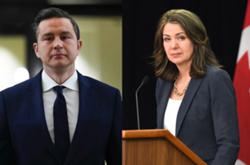
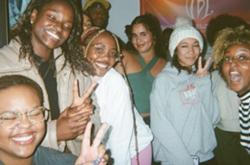


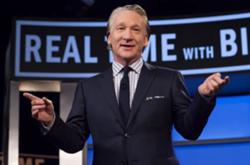

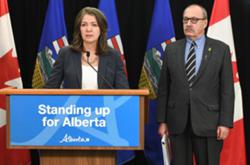
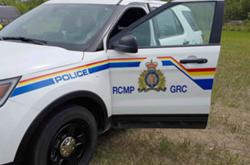
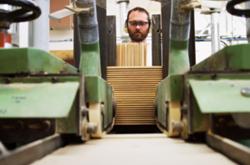
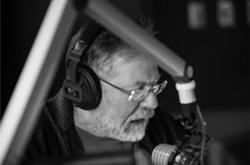
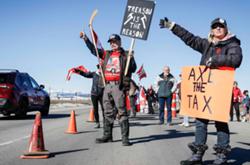
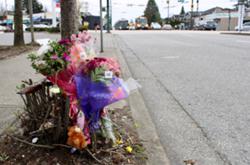
Tyee Commenting Guidelines
Comments that violate guidelines risk being deleted, and violations may result in a temporary or permanent user ban. Maintain the spirit of good conversation to stay in the discussion.
*Please note The Tyee is not a forum for spreading misinformation about COVID-19, denying its existence or minimizing its risk to public health.
Do:
Do not: